The History of Technology - CryEngine
| GENERAL INFORMATION ABOUT TECHNOLOGY |
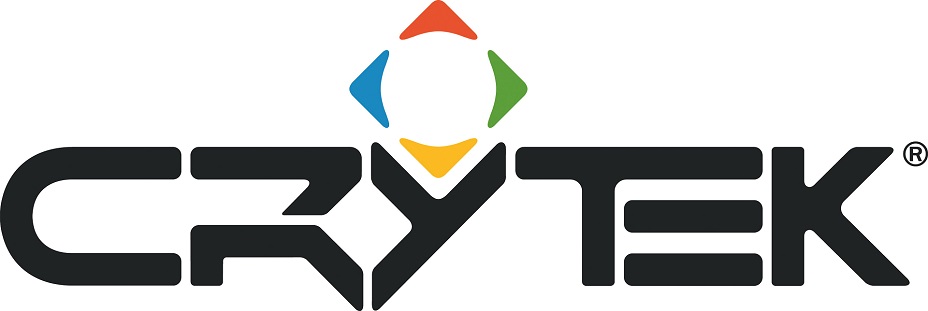
Today we want to present you a new series of articles in which we will talk about the history of the development of technologies that have influenced the gaming industry. And let's start with one of the most famous engines, which to this day remains the flagship among its generation of engines - CryEngine, from a private German company Crytek. The company was founded in 1999 by programmer Cevat Yerli, a student of a German university, who was a native of Turkey, and his brothers Avni Yerli and Faruk Yerli.
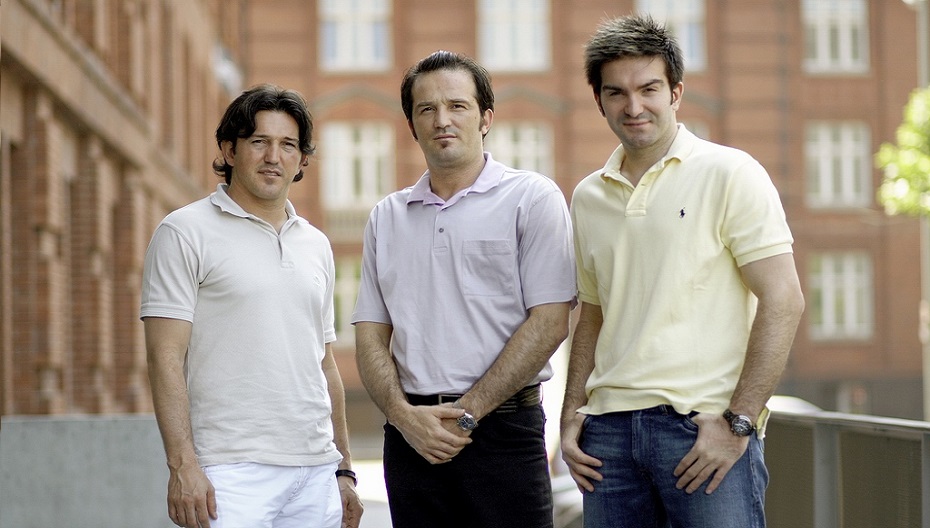
| CRYENGINE |
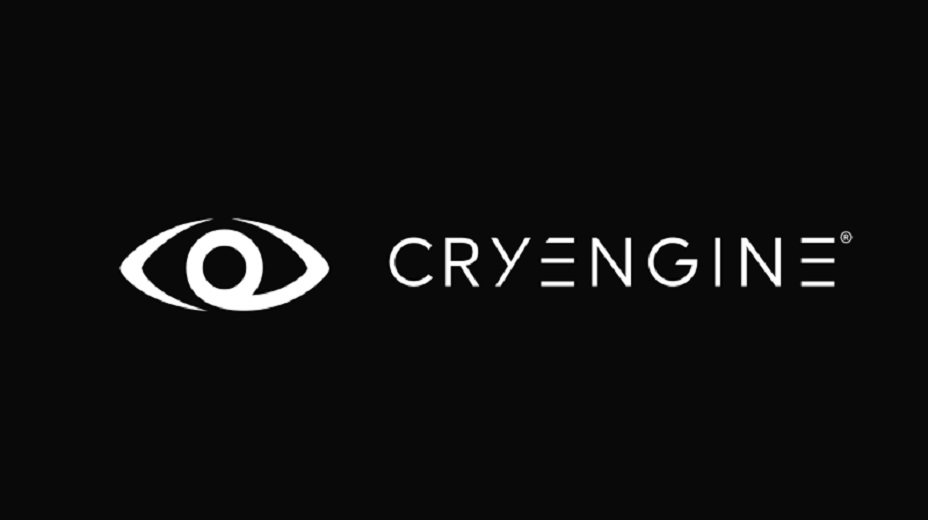
The games of that time had a number of shortcomings both in the gameplay and in the graphical plan. And instead of complaining about the developers on the Internet, Cevat and his brothers start working on their own game. To begin with, a completely new graphics engine was needed, which the Early brothers and the development team assembled by him began to work on. Recruitment was carried out via the Internet, the task was not an easy one, since at that time the idea of \u200b\u200bcreating a completely new revolutionary graphics engine by a group of students seemed completely absurd.
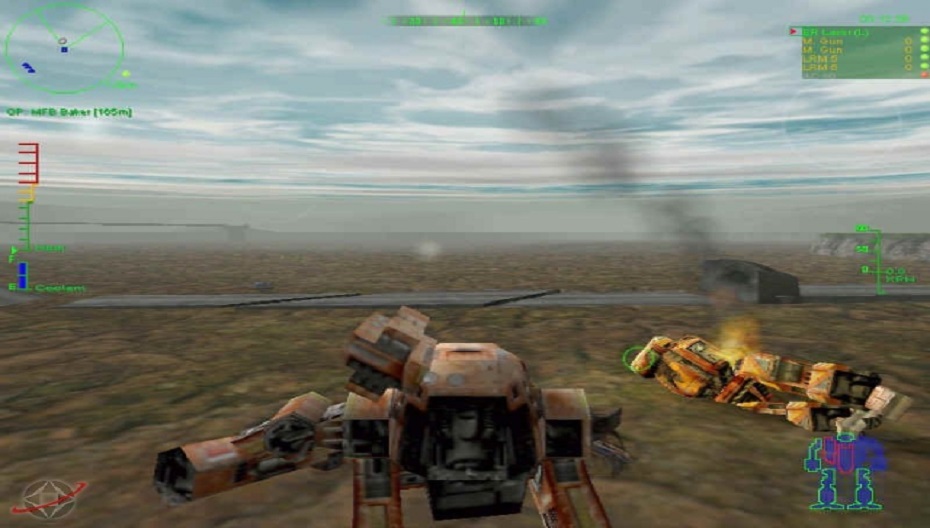
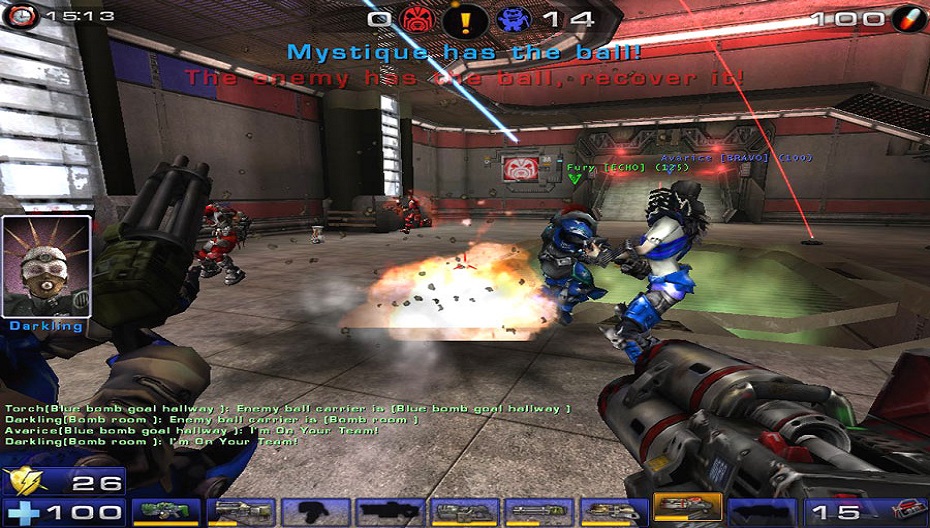
| FIRST APPEARANCE OF CRYENGINE |
Many people are still convinced that everything has already been created and it’s not even worth trying, nothing will come of it anyway, but this is not about our Turks. Thanks to incredible perseverance and insane hard work, a highly professional development team was assembled and created a working demo version of the engine, which they demonstrated at the Electronic Entertainment Expo in June 2000. The demonstration was held in the habitat of a giant island inhabited by dinosaurs.
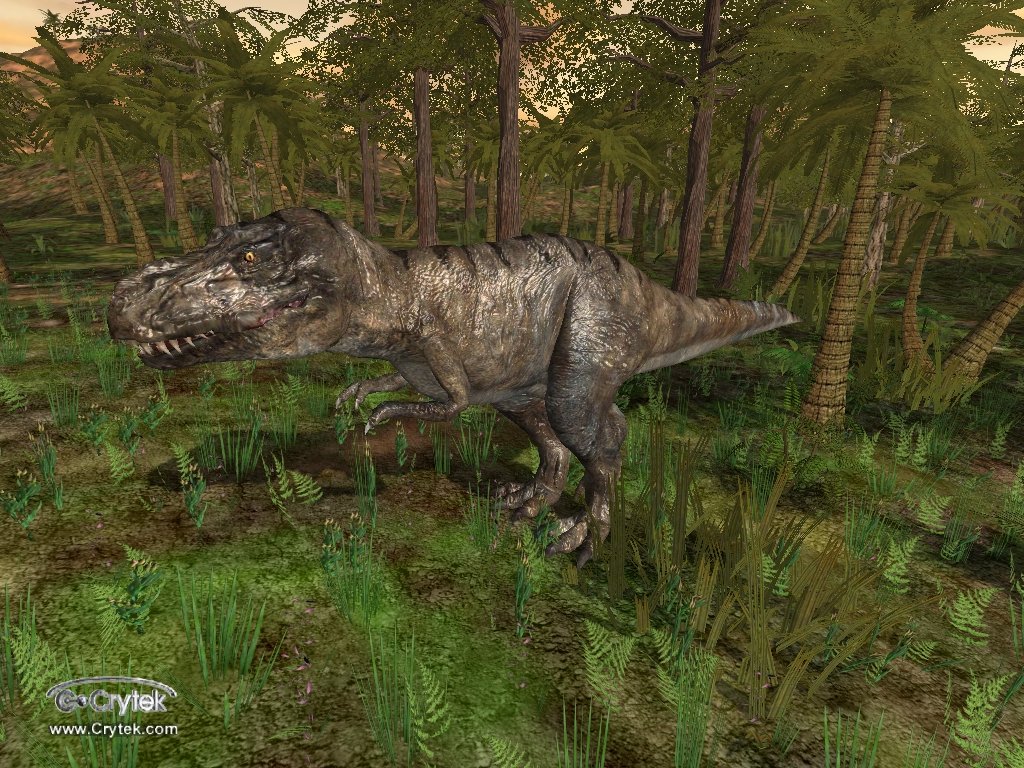
The engine, despite the fact that it was created by students, covered a huge territory and provided detail and processing speed unattainable at that time.
Representatives of the American company nVidia noticed their demonstration and asked Crytek to prepare a presentation for the European Computer Trade Show 2000 as a demonstration of the capabilities of the nVidia NV16 graphics processor, which was used in the latest GeForce 2 Ultra and GeForce 2 MX video cards at that time.
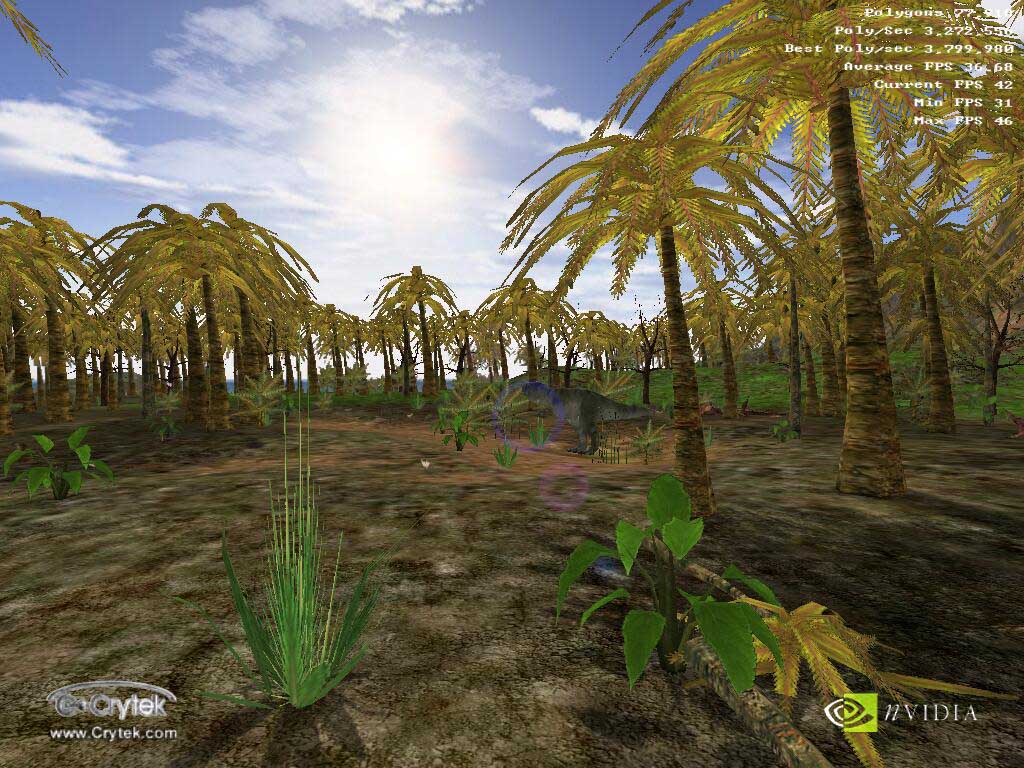
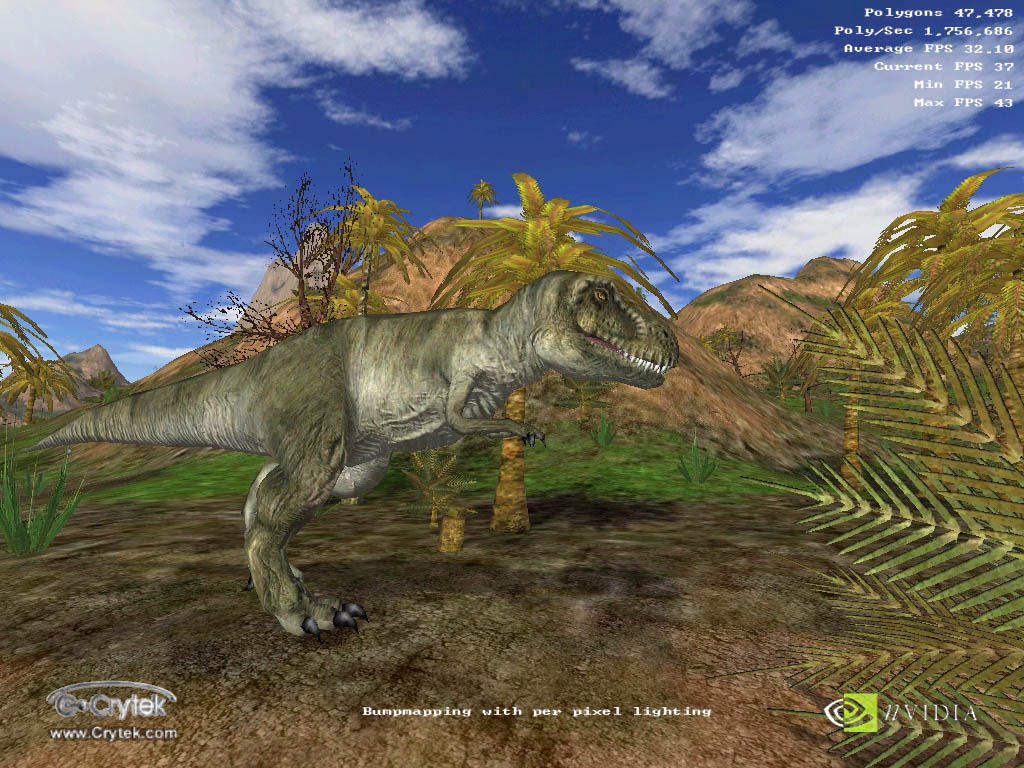
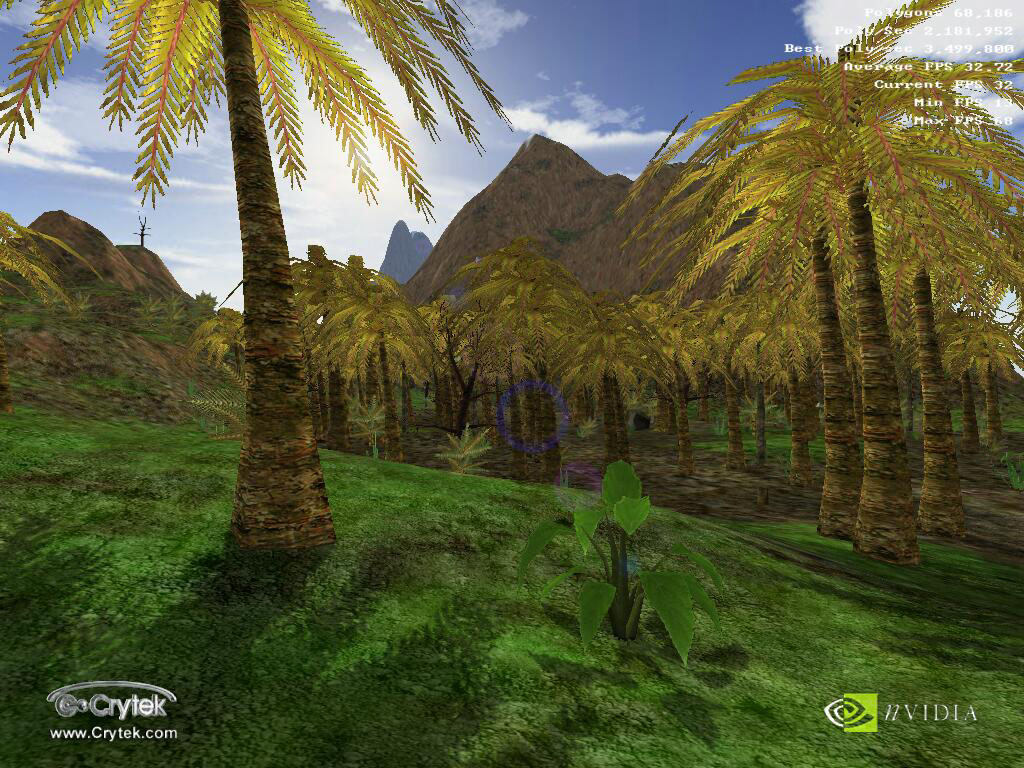
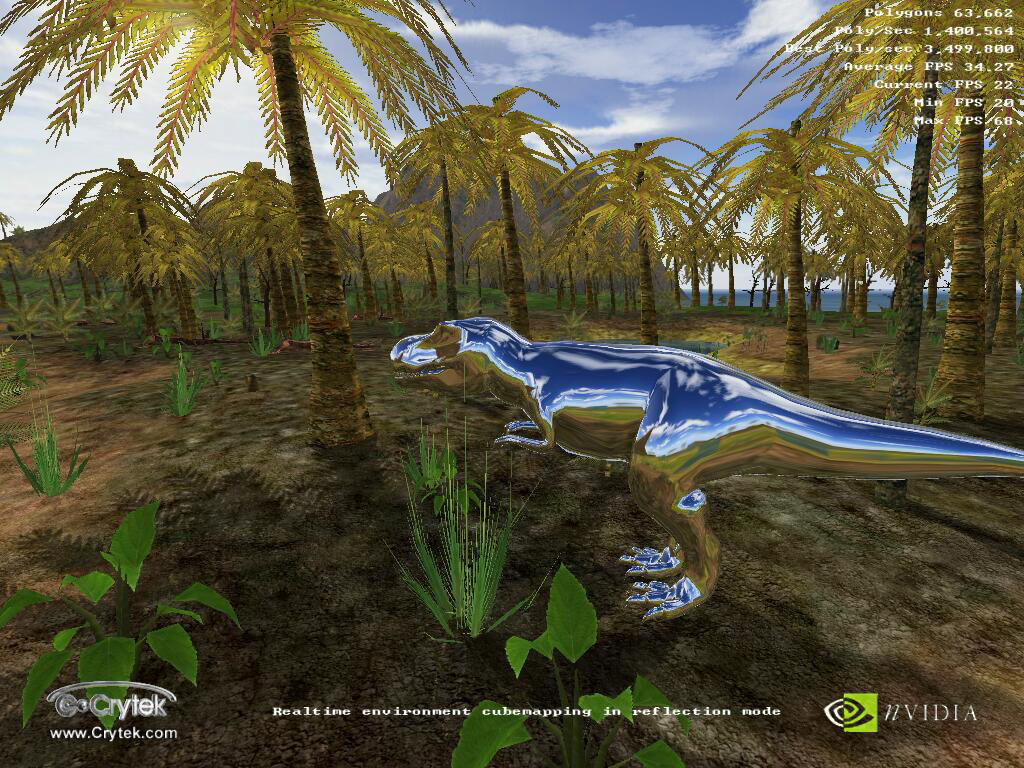
After the demonstration, visitors expressed great interest in the novelty. The incredible success of cooperation with nVidia pushes the brothers to found their own company CryTek and they decide to turn their development into a full-fledged engine for creating their own games. After that, based on the engine, it was decided to create 2 games - "X-Isle" and "Engalus", but none of these games was released.
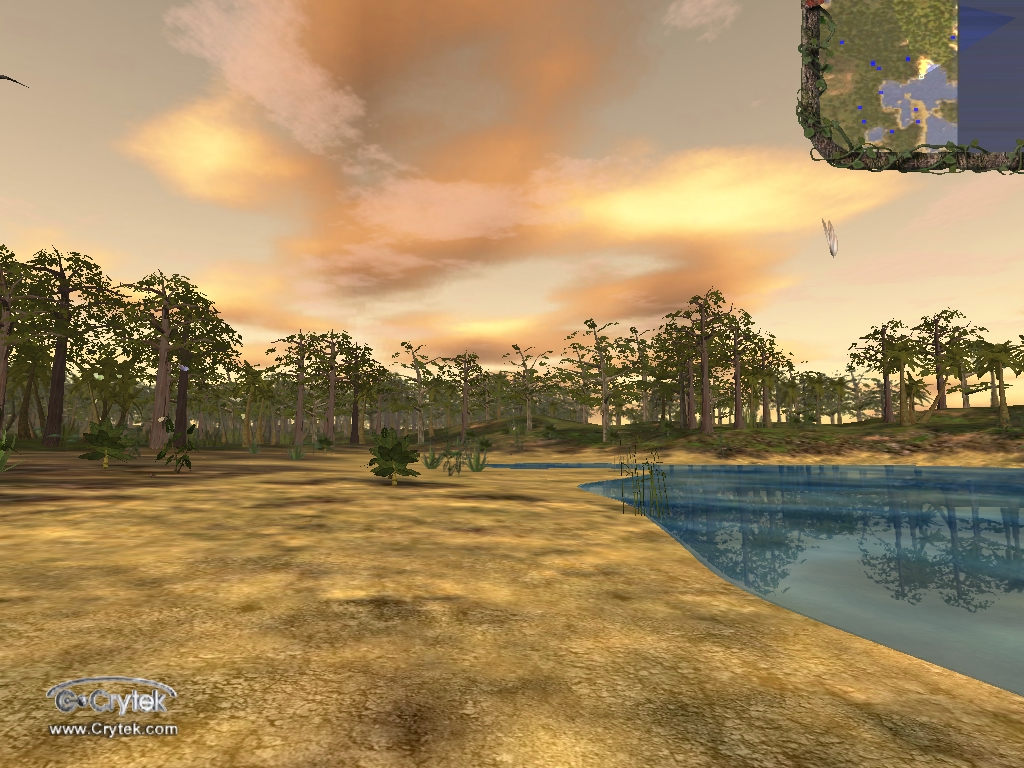
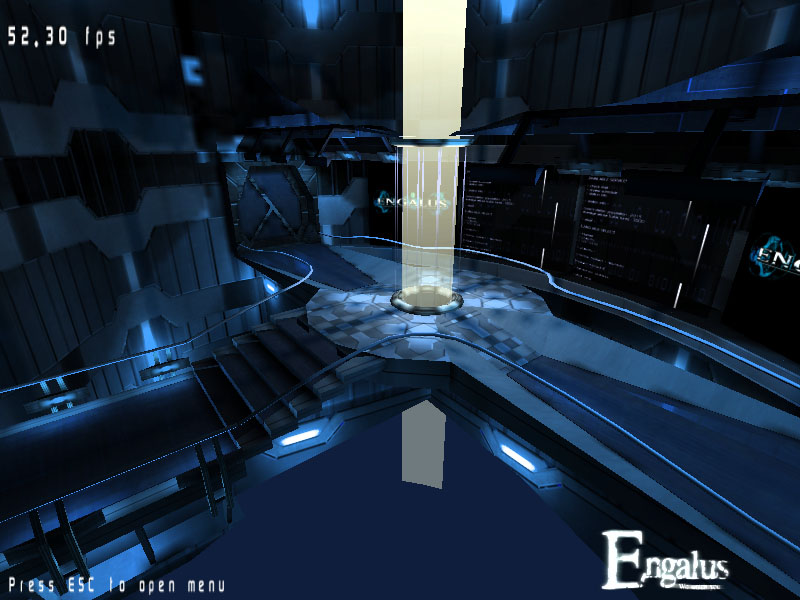
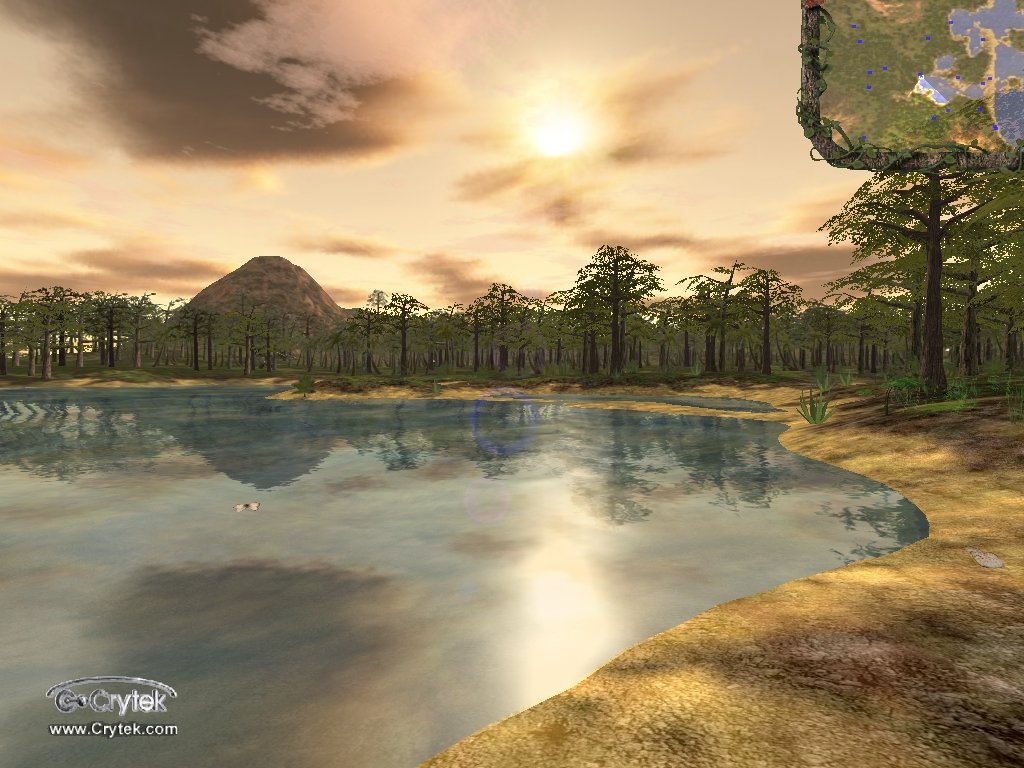

| ENGINE FEATURES |
CryEngine, like all modern graphics engines, is cross-platform. The rendering engine supports both OpenGL, DirectX 8 and 9 versions. The engine is designed for open areas, but is also good for closed spaces. With all this, one game level contained locations up to 3 km.

The physical system does not use third-party engines, but this did not affect its quality. The physics engine supported solids, fluids, vehicles, tissue simulations, soft body effects, Ragdolls for the technology developed in-house, everything came out at the highest level.
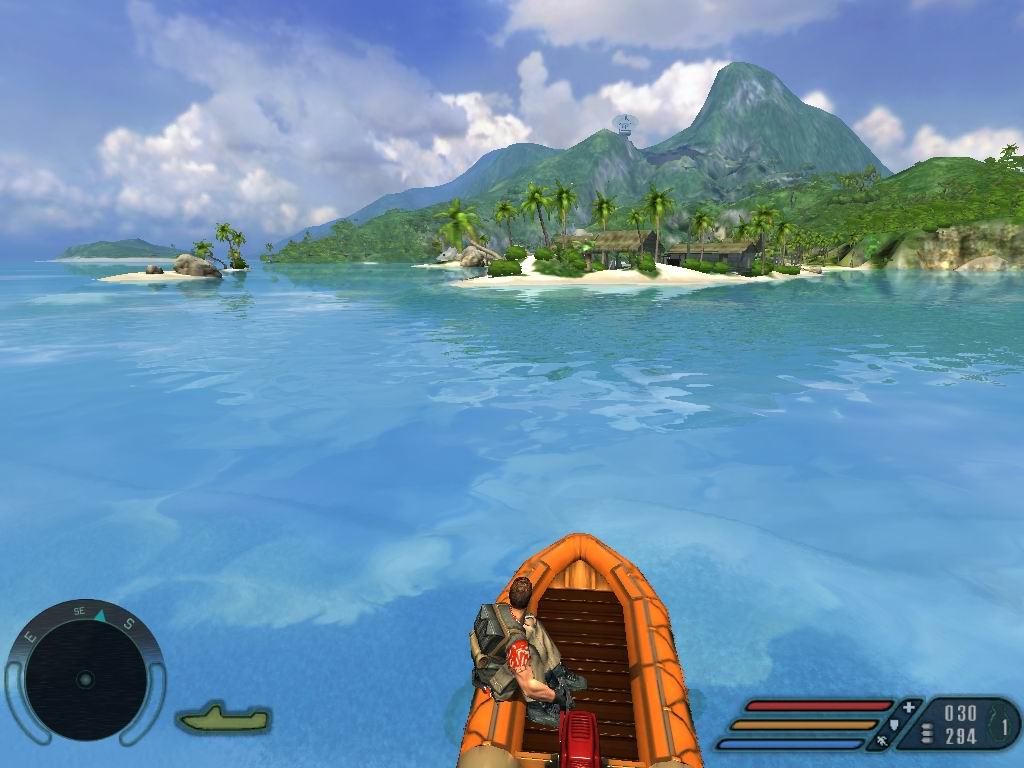
Inverse kinematics technology allowed models to be given multiple animations to create realistic behavior. The artificial intelligence system allowed the use of scripts written in the loa engine instead of C ++, the uniqueness of which lies in the fact that scripts written in this language do not need to be compiled.

For the network mode, a client-server system is used, which allows you to communicate between the player and the server as quickly as possible and with a minimum amount of losses. The engine allows you to integrate DLLs from 3DsMax and Maya thanks to CryTek's own software called PolyBump. Also, the main feature of the engine is that you can embed new modules written in the C ++ programming language into it.
In general, the engine gave us Far Cry, with many add-ons, and MMORPG AION. The developers from NCSoft purchased Cryngine for their MMO, although later they redesigned it to suit their needs, optimizing it for the specifics of multiplayer online games.

| ENGINE DEVELOPMENT |
Shader technologies were also used in the engine. After the release of the engine itself in 2002, this module was modified after the release of Far cry, adding support for version 3.0 shaders, and the engine version was called 1.2. In general, shaders allowed several visual effects, namely per-pixel lighting, bumpy reflections, refractions, steam, animated textures, transparent computer displays, windows, bullet holes. Also, thanks to the shaders, the fog was organized on a completely new level, or rather, it was more realistic in comparison with other engines that existed at that time.
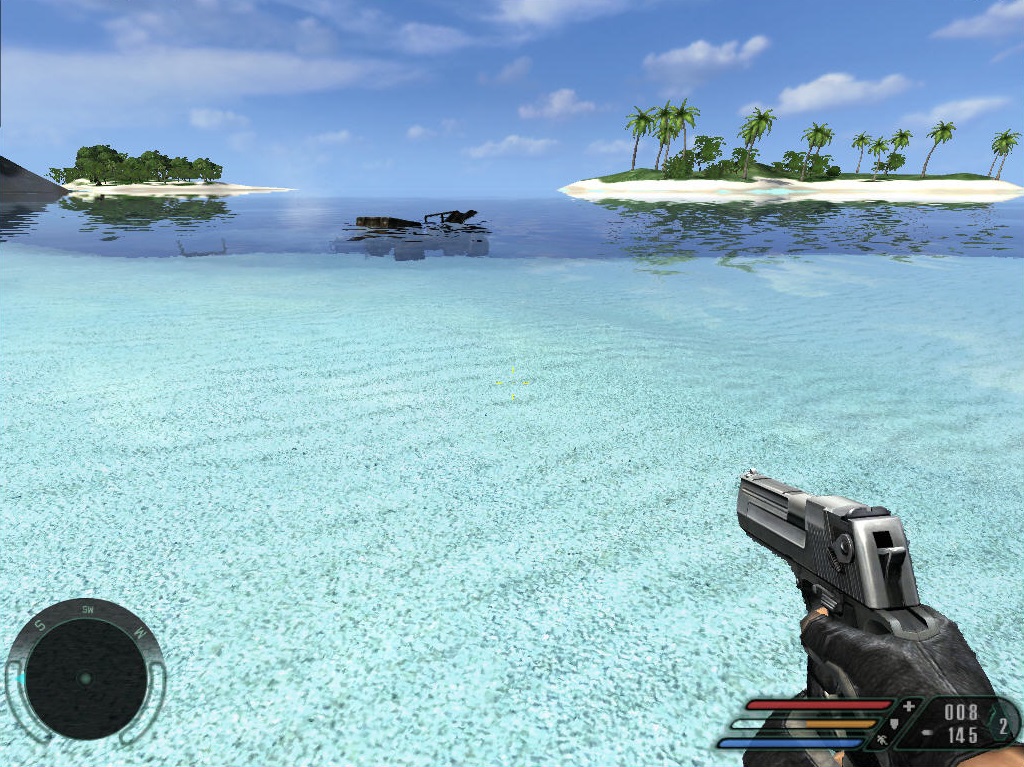
In addition to the embedded shaders, the engine also uses PolyBump technology, a special way to create textures that make them appear bumpy. Unlike Bumpmapping, where normal maps are used to create volumetric textures, Polybump uses real polygons. This results in CryEngine games being quite CPU dependent. However, this version of the engine contained a number of bugs, and therefore the patch was withdrawn. Later, the company developed version 1.3, which improved and debugged the previous technologies, as well as added DXTC5 normal map compression for nVidia video cards and 3Dc for ATI video cards. Geometry Instancing technology has also been added.
On August 3, 2004, "CryEngine MOD SDK", a set of additional tools for the CryEngine engine and Sandbox 1 real-time game level editor, was officially released. CryEngine MOD SDK is available for free download. On September 15, 2004, an updated version of the "CryEngine MOD SDK" was released, which included the PolyBump plugin, the "CryExporter" tool for importing models from 3ds Max and Maya, and an artificial intelligence manual. On May 10, 2005, Crytek announced a patch for "Far Cry" that brought support for AMD64 technology to the game.
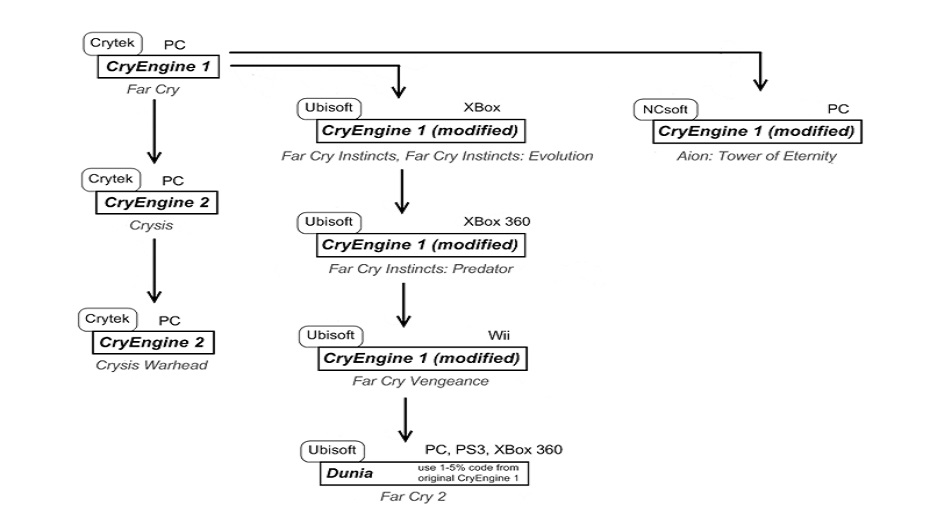
On March 30, 2006, Ubisoft acquired all rights to the CryEngine game engine developed by Crytek. All rights to the computer game Far Cry were also acquired. Ubisoft has obtained exclusive rights to all intellectual property of the game and the engine, including the trademark, logo, characters, story, franchise, setting, development and publishing rights. Therefore, from that moment on, Crytek had no legal or legal ties to the engine, could not use either the engine itself or the CryEngine trademark.
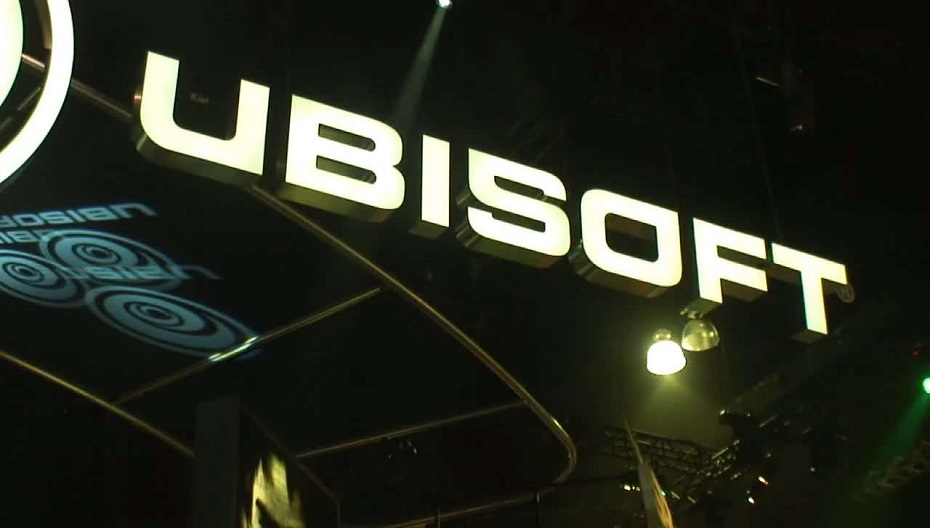
After the release of all the patches from Crytek to the game "Far Cry", the engine develops in two directions. Since Ubisoft acquired all rights to CryEngine and Far Cry in 2006, Ubisoft continued to develop the engine for Far Cry Instincts and Far Cry Instincts: Evolution for Xbox, Far Cry Instincts: Predator for Xbox 360, and Far Cry Vengeance for Nintendo. Wii. As it was said in an official interview with Louis-Pierre Farand, the main producer of Far Cry 2, only 2-3 percent of the original CryEngine code will be used in the Dunia Engine. Subsequently, Crytek used the engine as the basis for CryEngine 2.
| SYSTEM REQUIREMENTS FOR CRYENGINE |
| Minimum system requirements | Effective system requirements | Optimal system requirements |
|
Processor: AMD Athlon or Pentium III 1 GHz
RAM: 256 MB RAM
Video: 64 MB
Video card : Radeon 8500 or GeForce MX 440 or higher Operating systems: Windows 98SE/2000/XP |
Processor: AMD Athlon XP 2800+ or Pentium 4 3 GHz
RAM: 512 MB RAM
Video: 128 MB
Video card : Radeon 9600 Pro or GeForce FX 5600 XT or higher Operating systems: Windows 98SE/2000/XP ( |
Processor: AMD Athlon 64 3000 or Pentium 4 3.4 GHz
RAM: 1024 MB RAM
Video: 256 MB
Video card: Radeon 9800XT or GeForce 6800 Ultra or higher Operating systems: Windows 98SE/2000/XP |
| CRYENGINE 2 and CRYSIS |
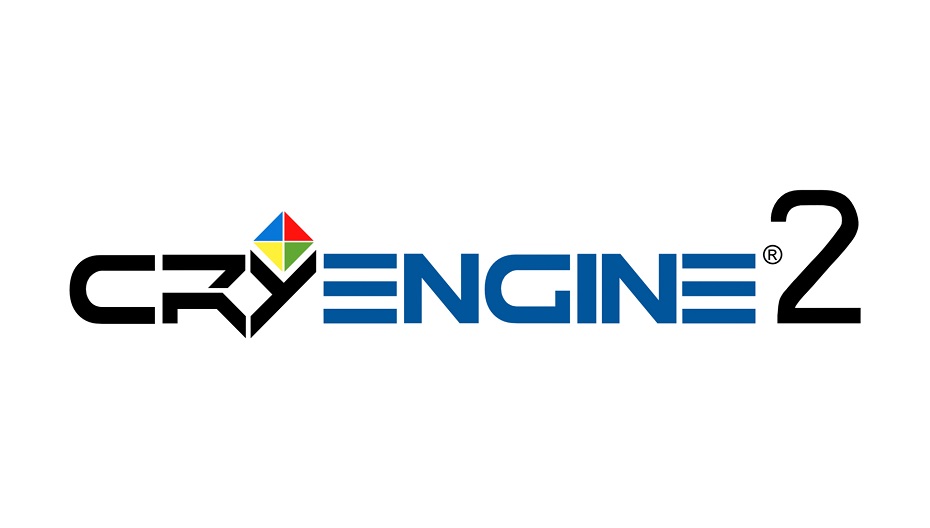
CryTek, having sold all the rights to FarCry, decided to develop a new version of the engine, as well as create a new cult series called Crysis along the way. CryEngine 2 is written in the same way as its predecessor in C++, but perhaps its main difference is that it is not cross-platform. The only OS platform it supports is Windows. In fairness, it can be noted that they tried to port it to the 7th generation consoles - PS3, XboX 360 and Wii. There was even a closed testing of the capabilities of this engine, but unfortunately, the consoles of this engine were never seen. CryEngine 2 at the time of its release is the most technologically advanced and photorealistic engine compared to its competitors.

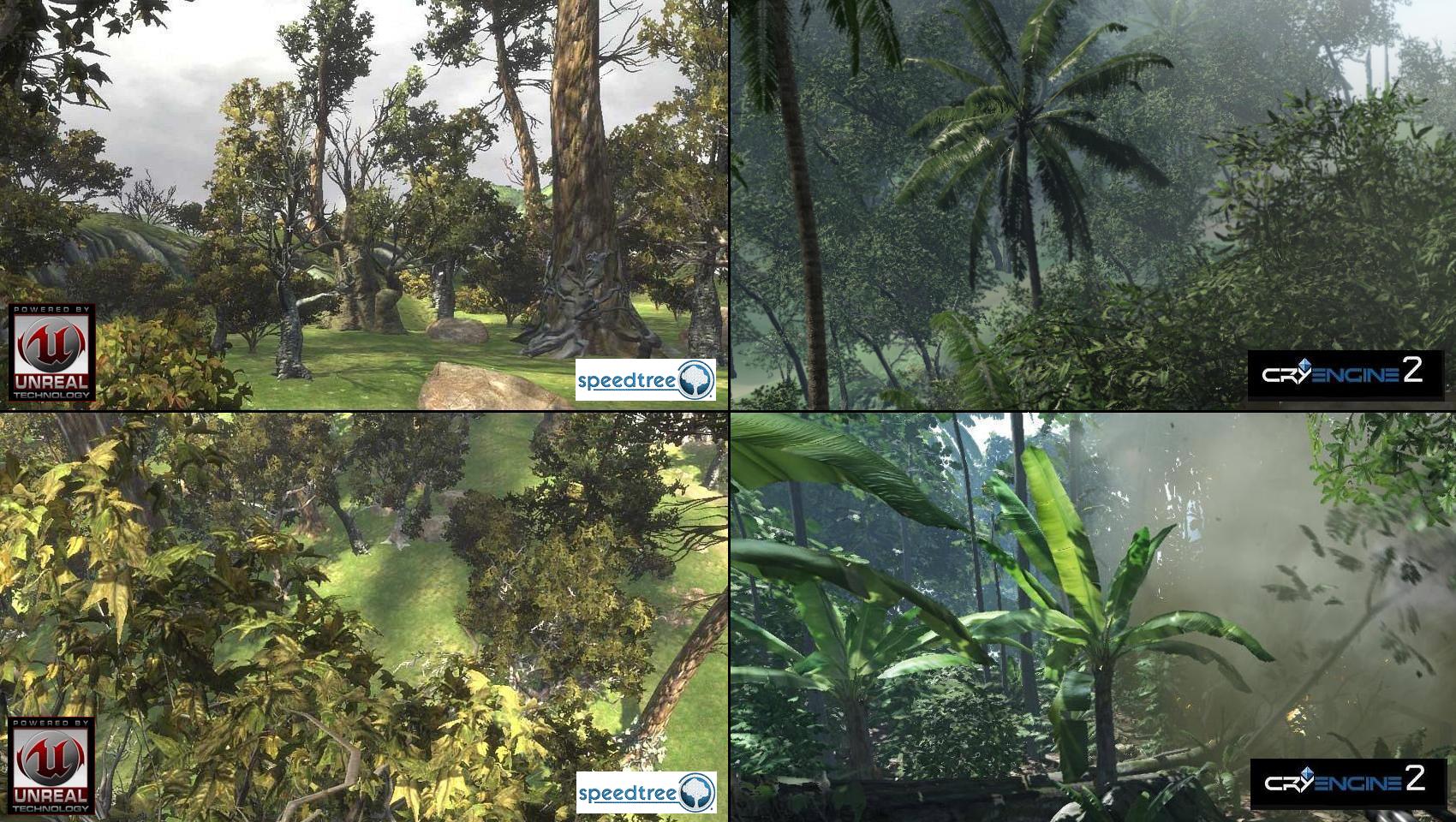
| ENGINE FEATURES |
The engine was written using the DirectX 9 and 10 application programming interface. CryEngine 2 incorporates and improves on all of the technologies of its predecessor, CryEngine, as well as many new and innovative graphics technologies. Level development still remained at its best, even improved, CryEngine 2 is still good at huge open and closed locations, but there was also a resource pumping system that allowed filling levels as the player progressed.

The render engine is also no exception. depending on the version of DirectX, as well as on the choice of 32 or 64 bit system, the engine should provide a different render. Sometimes developers don't use 64-bit capabilities or a more modern API.
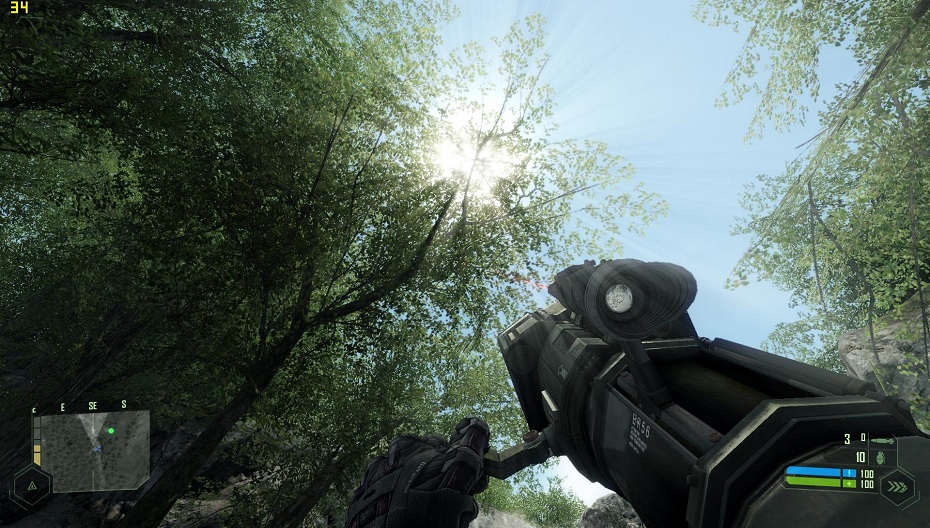
Powerful tooling features allow the developer to analyze engine performance in real time, generate detailed memory usage reports, and perform automated walkthroughs at every level to get consistent and complete test results.
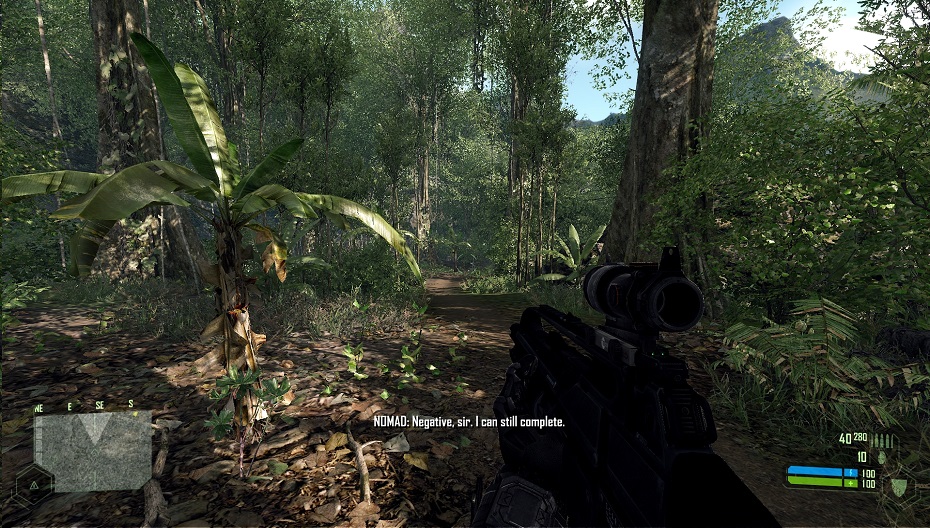
Crytek benefited from 64-bit architecture, because the size of the game level has not decreased since the days of FarCry, therefore, the cost of resources for drawing it has increased significantly. This led 32-bit systems to limit the RAM and support for 64-bit systems easily solved this problem. All engine components are Crytek's own developments. CryEngine 2 supports and actively uses multi-threading in multi-core processors and processors using multi-threading technology.
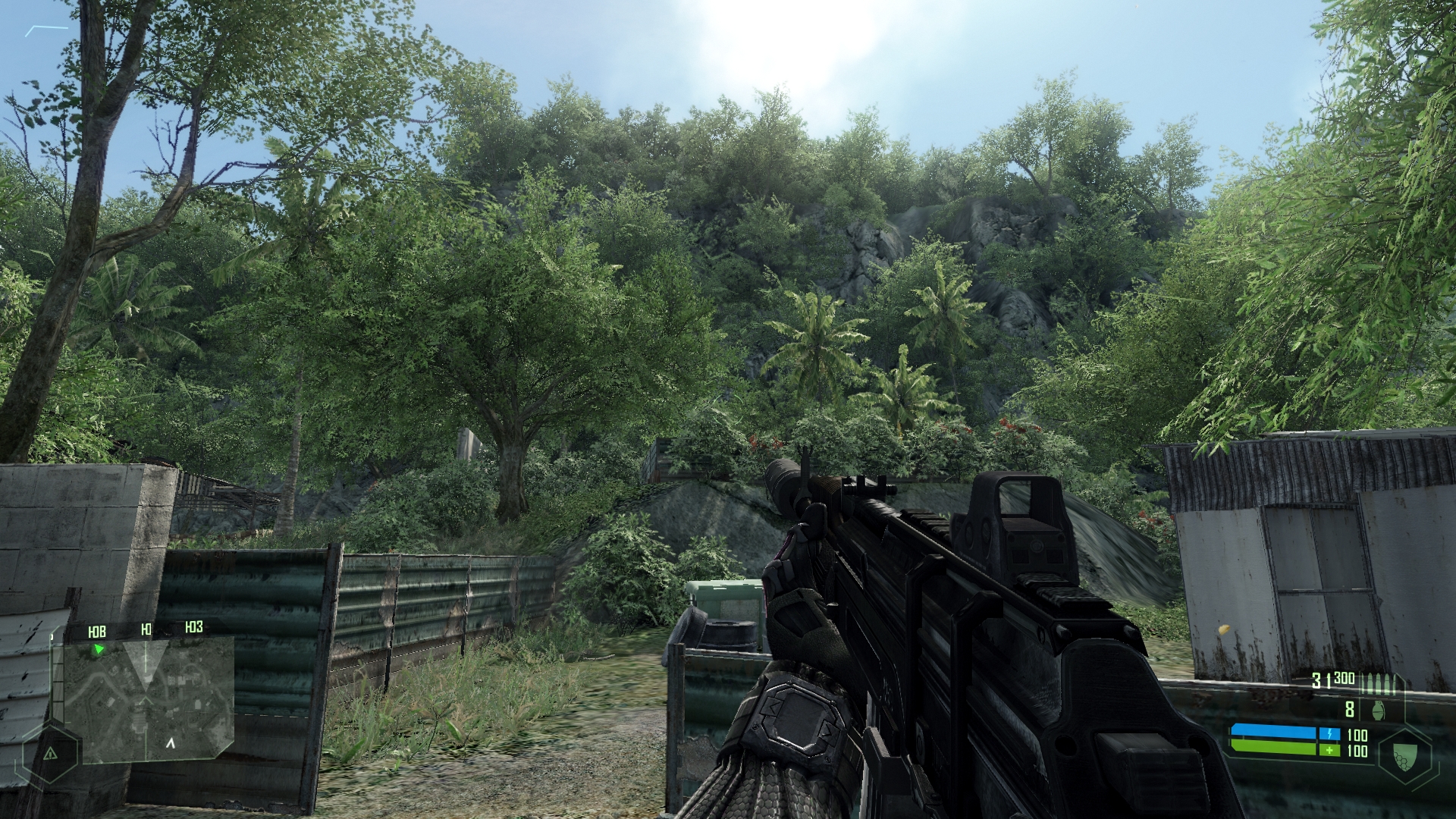
Other interesting features include light projection technology that supports not only HDR and dynamic shadows, but also the calculation of light as a post-rendering effect, such a lighting technology is called SSAO. The SSAO algorithm works in real time and simulates diffuse indirect lighting and corresponding darkening in a 3D virtual space.
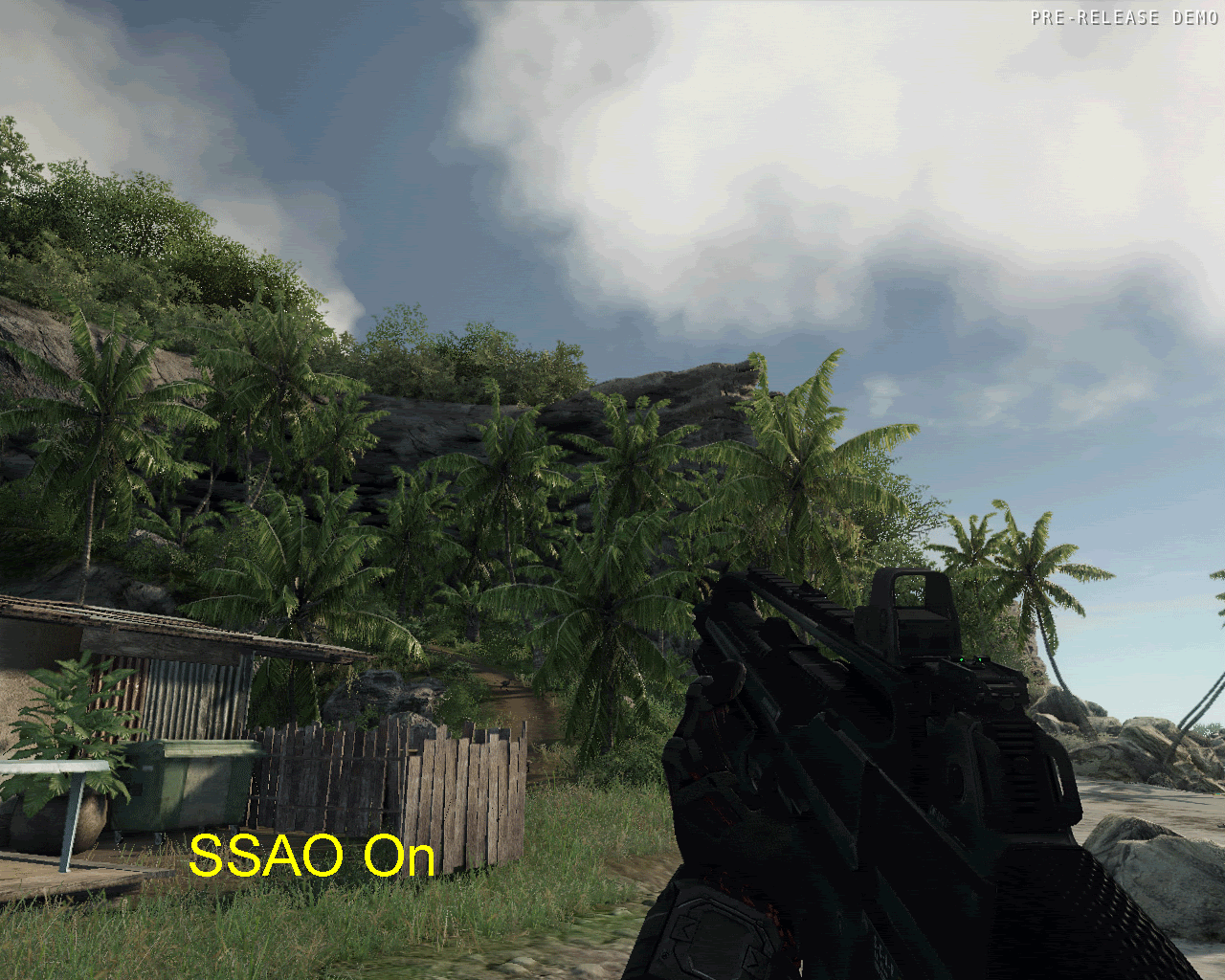
| CRYPHYSICS PHYSICAL ENGINE |
The physics engine was developed by CryTek themselves and is called CryPhysics, a multi-threaded real-time physics engine integrated into CryEngine 2. The huge functionality of the created technology made it possible to perform various manipulations with physics and can be applied to almost all objects on the level, including trees and vegetation, can realistically simulate the reaction of these objects to such influences as gravity, wind, explosions, friction and collision with other objects. Probably CryTek needed its own physics to achieve the optimal result from its development.
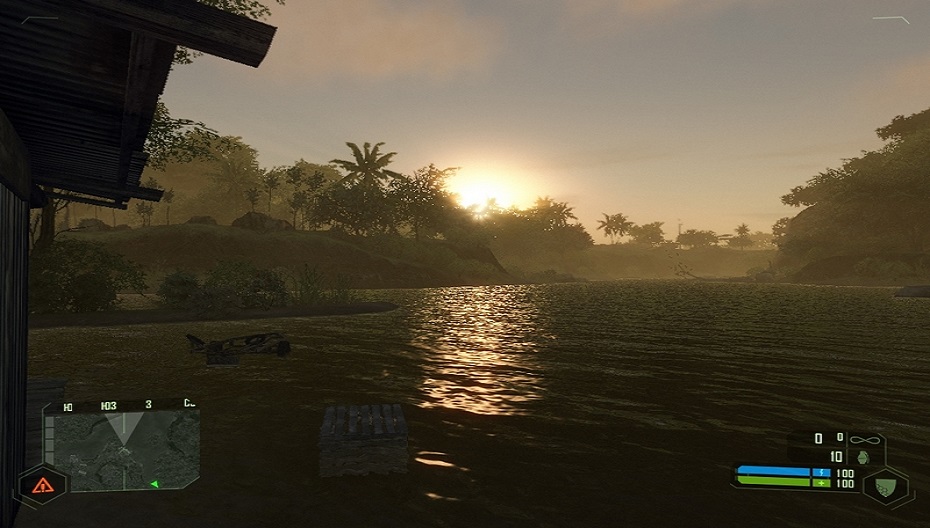
Flexible vegetation that responds to the effects of wind, rain or character movement, realistically modeled interactive rope bridges, physically controlled animation of creature tentacles - all this is just part of the possibilities of advanced rope physics.
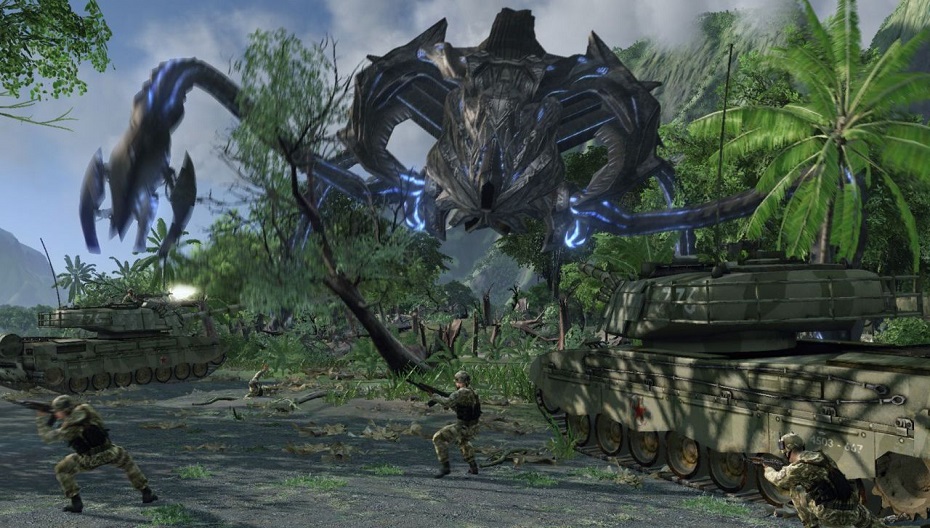
Dynamic physics allows you to interact with any arbitrary surrounding object or shape, selectively destroy buildings, trees or other objects, and then interact with the resulting debris and remnants. The engine uses predefined characteristics of breaking or breaking objects.
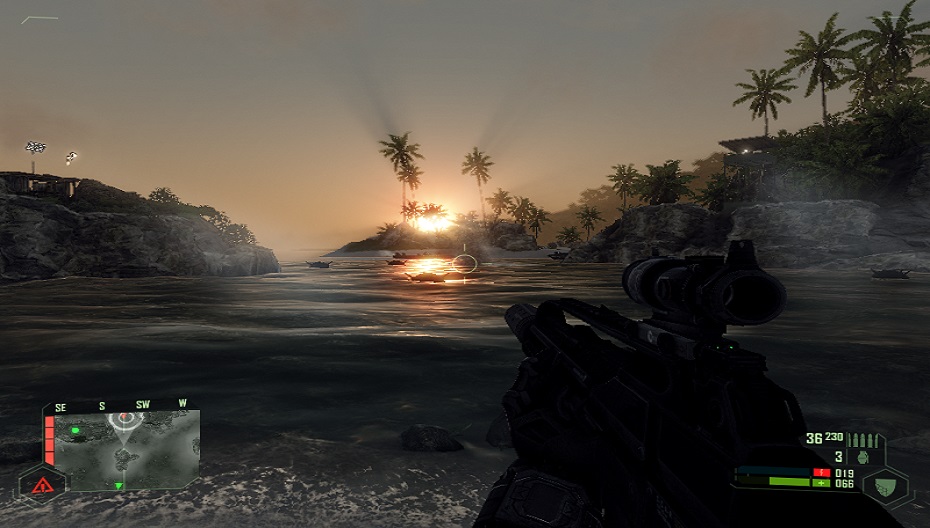
The new CryEngine 2 character animation system has significantly improved, compared to the CryEngine animation system, the animation of people, models and vehicles in real time. A fully integrated character editor provides animation previews inside the Sandbox 2 editor. The character customization system and parametric skeletal animation have created more unique and lively NPCs.
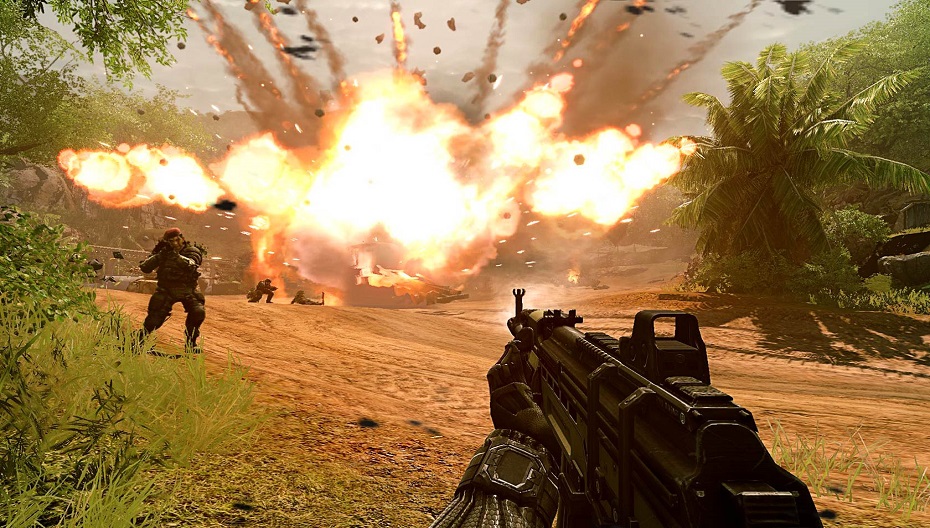
Using adaptive keyframe compression technology, CryEngine 2 can adjust the level of compression to match the precision required for any given animation. Thanks to the compression, which slightly distorts the accuracy of the movement, it became possible to free up at least 90% of the RAM.
| ENGINE DEVELOPMENT |
Patches for the game Crysis also make changes to the engine, so their release can be considered a continuation of the development of the engine.
Patch 1.1, released on January 8, 2008, mainly changes the engine:
SLI mode improvements (greater performance, support for CrossFire technology);
improving the overall performance of the game;
added the ability to configure Vertical Sync;
added the ability to control the level of motion blur (eng. Motion Blur UI) and the level of "defocus";
fixed a bug related to changing the resolution when working with Direct3D10;
Fixed a bug related to depth of field and rendering of water drops when working with Direct3D10.
Patch 1.2, released on March 6, 2008, also contained changes and optimizations to the game engine:
added multisampling shaders for shadow rendering;
fixed memory leaks in modes using FSAA.
optimized removal of the remains of destroyed objects in DX10 mode;
optimized motion blur at very high image settings in DX10 mode;
fixed memory leaks when displaying vegetation and destructible objects.
Engine development in Crysis Warhead and Crysis Wars
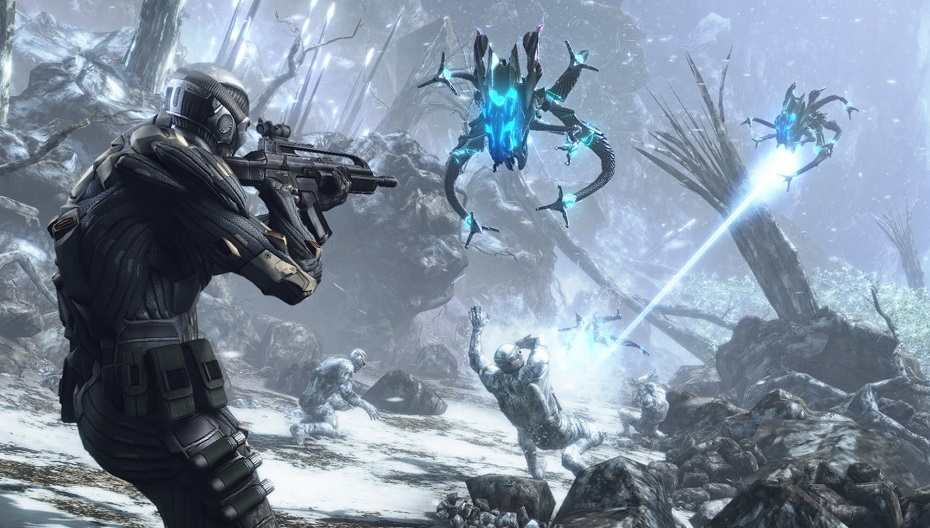
After the announcement of the Crysis Warhead add-on, it became known that the addon will significantly improve and optimize the engine. After the release of Crysis Warhead on September 18, 2008, many independent reviewers really saw and confirmed the optimization of the engine. However, it became known that for optimization, the developers reduced the range of drawing objects and made the level of detail more “aggressive”. The Overclockers website commented on this fact: “The draw distance has been reduced, and this is skillfully hidden behind the effects of changing the depth of field. Previously, the engine was more diligent in drawing out the details of the background."
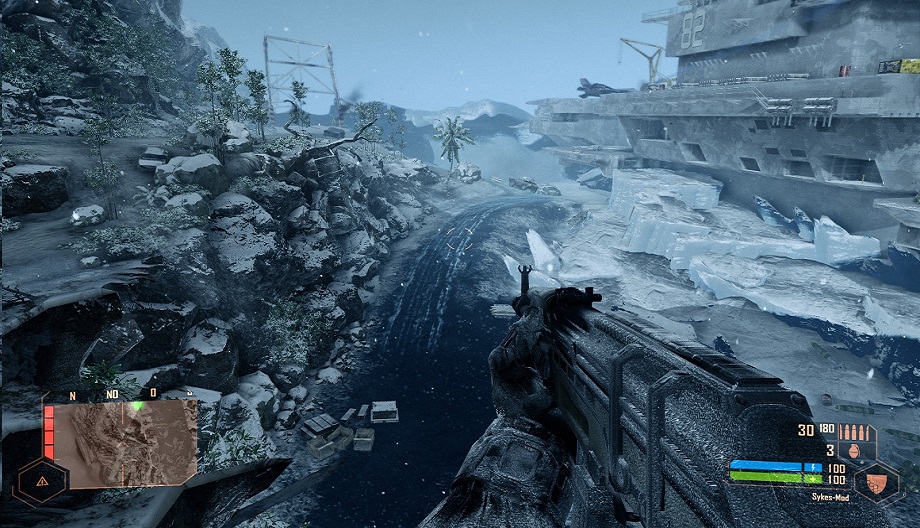
In addition to optimizations, a large number of models and textures have been reworked. A new lighting system was also introduced. To set the highest settings (“Very High”), you do not need to use Windows Vista and the DirectX 10 library, as is the case with Crysis. The highest settings, unlike Crysis, became available on both Windows XP and DirectX 9.
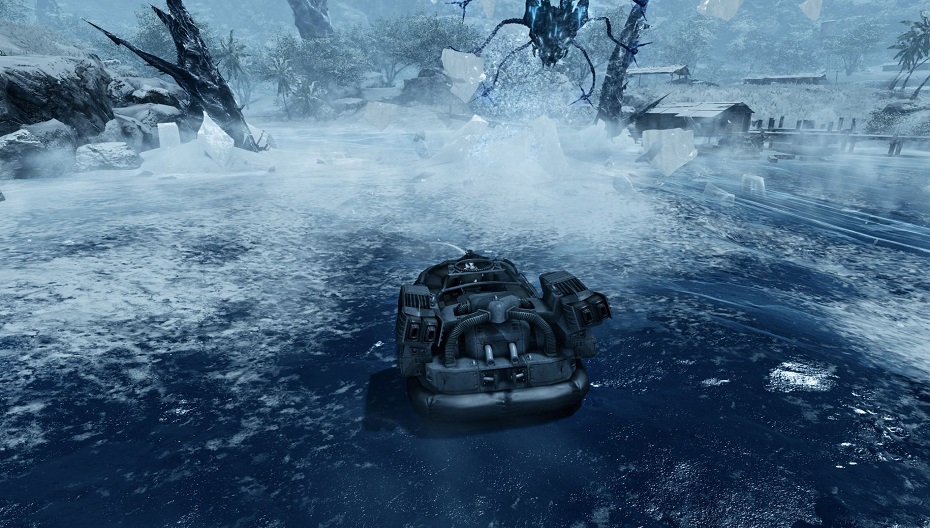
It came as a surprise to many reviewers that Crysis Warhead and Crysis Wars removed support for 64-bit systems, which was present in all previous Crytek games. The developers promised to add support for 64-bit systems in one of the patches. It was assumed that its absence in games is due to the lack of copy protection systems suitable for 64-bit programs. 64-bit support for both games has been added in patches. On November 4, 2008, patch 1.1 for Crysis Wars was released, and on January 30, 2009, patch 1.1 for Crysis Warhead was released - both patches added support for 64-bit operating systems to games.

At the end of November 2007, long before the announcement of Crysis Warhead, there was news from Crytek's chief animator Stephen Bender. He briefly spoke about the improvements in the graphic and technological components of the new Crysis 2 game, as well as the story. In particular, in Crysis 2 it is planned to improve the quality of textures, as well as skeletal and facial animation of characters. Moreover, several screenshots of Crysis 2 have appeared on the Internet, but their reliability has been questioned.
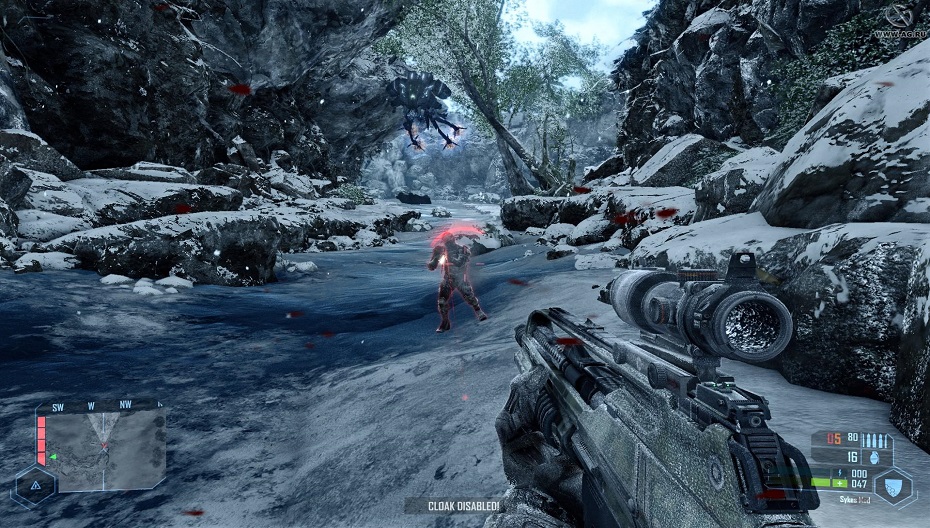
In an interview with the Australian site GameSpot at the end of September 2008, Cevat Yerli touched on the topic of next-generation game consoles for the second time in a month, stating that simultaneously with their appearance on the market - in 2011-2012 - there will be another breakthrough in the quality of game graphics. “The next breakthrough in graphics will come in 2011/2012; of course, it will be associated with the launch of a new generation of consoles, - said Yerli. “PS4, Xbox 720 and the correspondingly powerful PC will allow developers to create games whose graphics quality will not be much inferior to modern CG.”
| SYSTEM REQUIREMENTS FOR CRYENGINE 2 |
| Minimum system requirements | Effective system requirements | Optimal system requirements |
|
Processor: AMD Athlon XP 2800+ or Pentium 4 3 GHz
RAM: 1024 MB RAM
Video: 128 MB
Video card : Radeon 9600 Pro or GeForce 6600 XT or higher Operating systems: Windows XP/Vista/7/8 |
Processor: AMD Athlon X2 5200+ or Core 2 Duo 6600
RAM: 2048 MB RAM
Video: 512 MB
Video card : Radeon HD 3870 or GeForce 8800 GT Operating systems: Windows XP/Vista/7/8 |
Processor: AMD Athlon X2 6400+ or Core 2 Duo E8400
RAM: 3078 MB RAM
Video: 1024 MB
Video card : Radeon HD 5870 or GeForce GTX 480 Operating systems: Windows XP/Vista/7/8 |
| CRYENGINE 3 |
As in the case of its predecessors, it was impossible to guess what to expect from CryEngine 3. But in fact, the engine can both surprise and upset. CryEngine 3 was officially announced on March 11, 2009, and on October 14, 2009 the official release of the engine took place. The first game that was announced to use CryEngine 3 was the first-person shooter Crysis 2.

Nazar, a traditional Turkish amulet against the evil eye, is located in the center of the engine logo.
CryEngine 3 is a cross-platform engine, it supports IBM PC-compatible computers and Microsoft Xbox 360 and Sony PlayStation 3 game consoles. Support for next-generation consoles is also announced, as Cevat Yerli has repeatedly stated: “Our CryEngine 3 is already ready for the next generation of consoles and allows companies to develop cutting-edge games for this generation of consoles and the next."
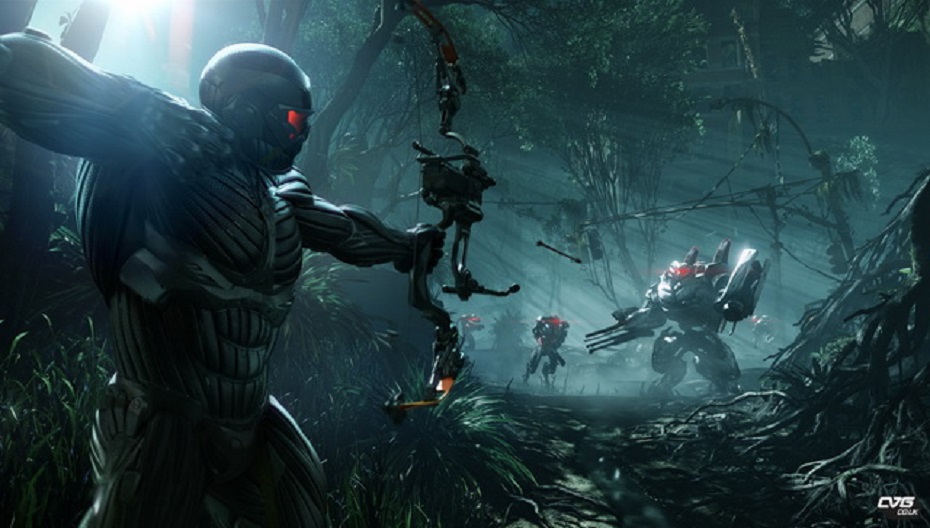
At the end of March 2010, in an interview with GameReactor magazine, Cevat Yerli said that Crytek developers had to face a number of problems when developing CryEngine 3 for consoles: “The most difficult process was the process of scaling CryEngine 3 for consoles, while maintaining image quality and the proper level of performance. Of course, there were problems, but we are very proud that our team managed to overcome them.”
The engine was written with DirectX 11 support in mind, but the first game released on CryEngine 3 completely ignored this API, as well as DirectX 10, until the release of the corresponding patch that corrected this defect. CryTek most likely did this out of a desire to make Crysis 2 cross-platform. After all, the main disadvantage of only PC was that there were 10 pirated downloads for every copy of the game bought, so special attention was paid to consoles.
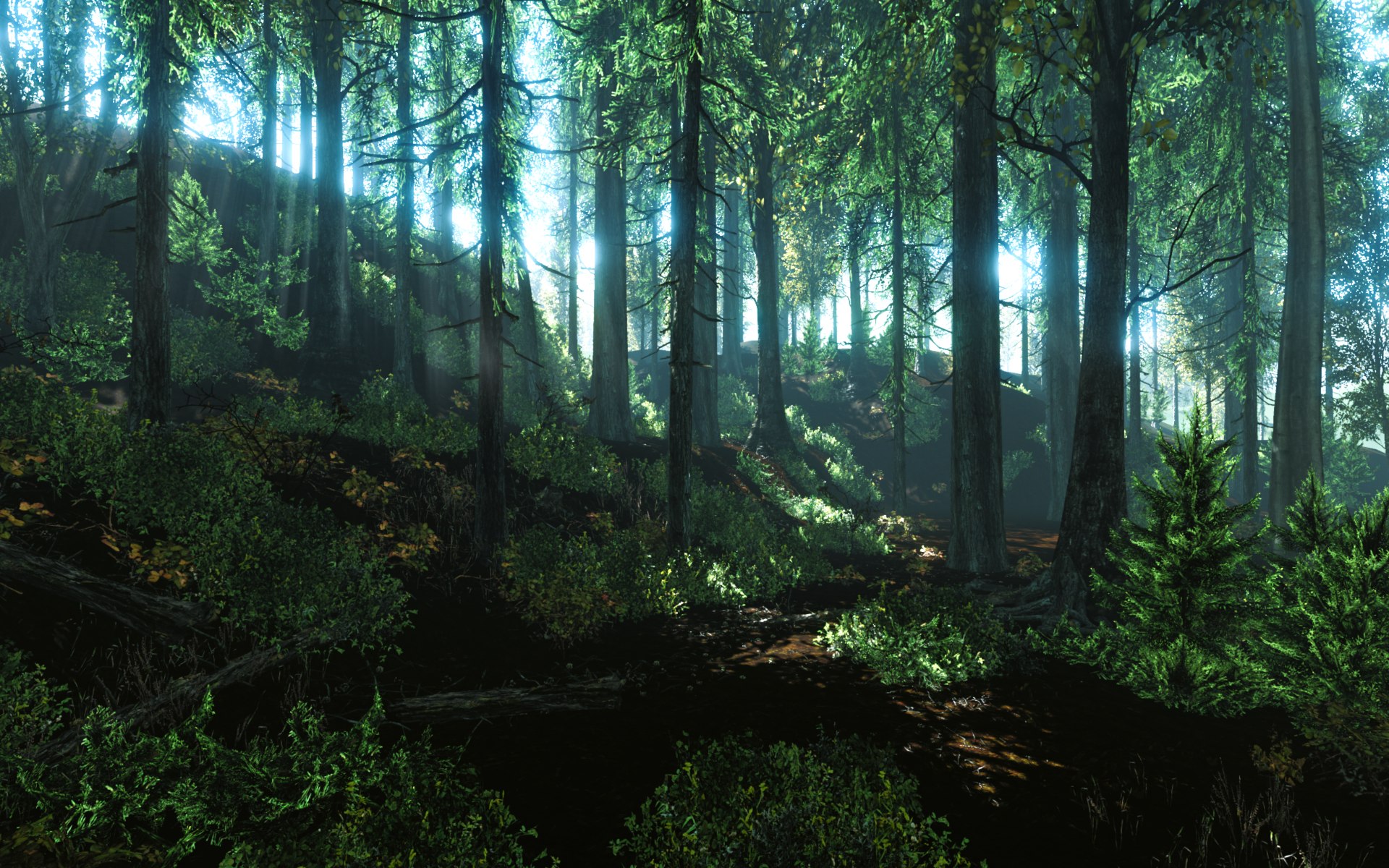
The engine is initially focused on the next generation of consoles, but there should be no difficulties with the seventh generation. The next gene of the console will allow the engine to unlock the full potential of the most powerful CryEngine 3. An interesting fact is that Crysis was ported to the console using the 3rd version of the engine, and not the second, and as the developers themselves stated, the seventh generation of consoles simply won’t pull CryEngine 2. This does not mean that the engine has become weaker, it means that the engine has become more optimized and even with relatively low resources, you can achieve a beautiful picture.
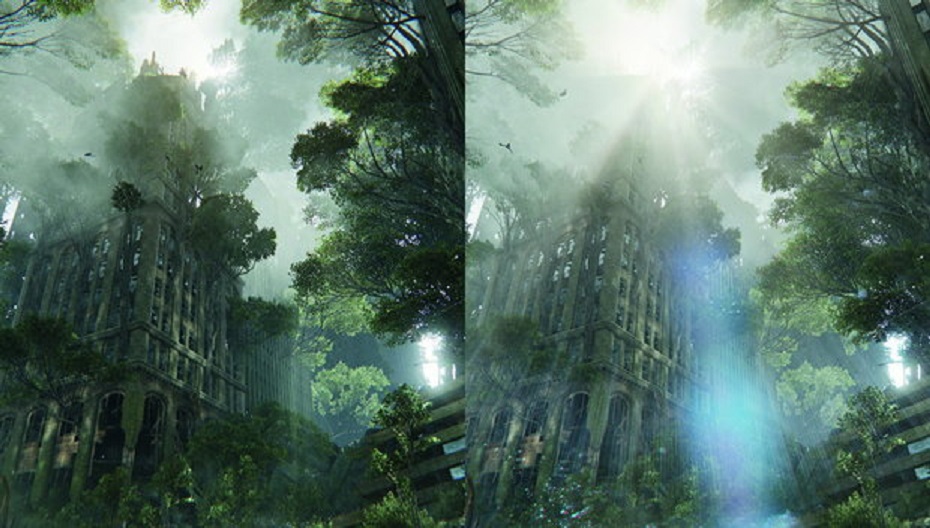
The first innovation of the engine is the update of the HDR module, and in more detail, the addition of gamma correction rendering to it. The main advantage of HDR over LDR, the older and less resource-intensive lighting rendering mode, is the number of colors. There are many more of them in HDR, which allows for a more realistic picture of what is happening. in addition, it is HDR that allows you to reproduce such effects as: depth of field, motion blur, eye adaptation and many others. Each of the points has something to say about the differences between the platforms, in this case, PC gamers got more colors. Thanks to the new technology behind the new graphics cards on the PC. Every shadow in the game is dynamic, on PC the shadow is updated every frame, and on consoles it syncs over multiple frames. on high PC settings, the shadow will reflect almost every object.
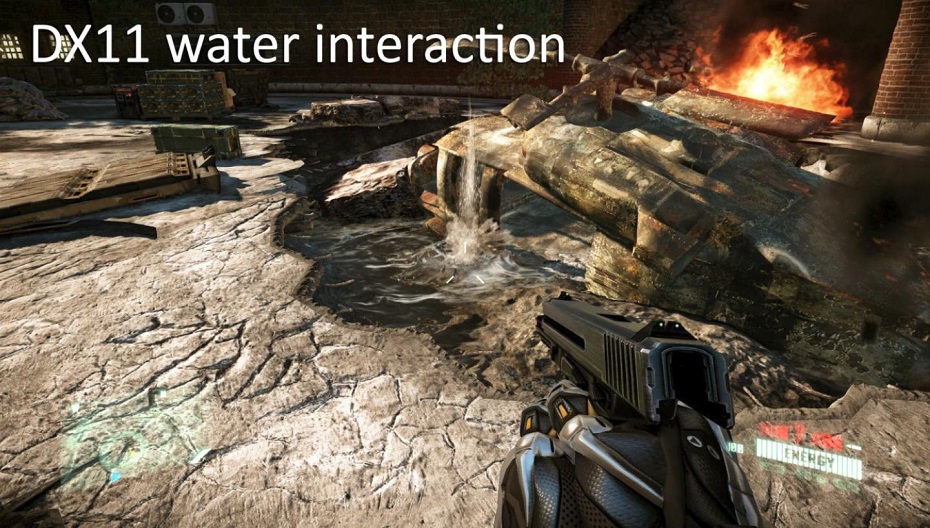
Water in Crysis 2 is organized using the same technology as in the first part, with the exception of the natural generation of waves. This effect is achieved by shifting the vertices of the surfaces.
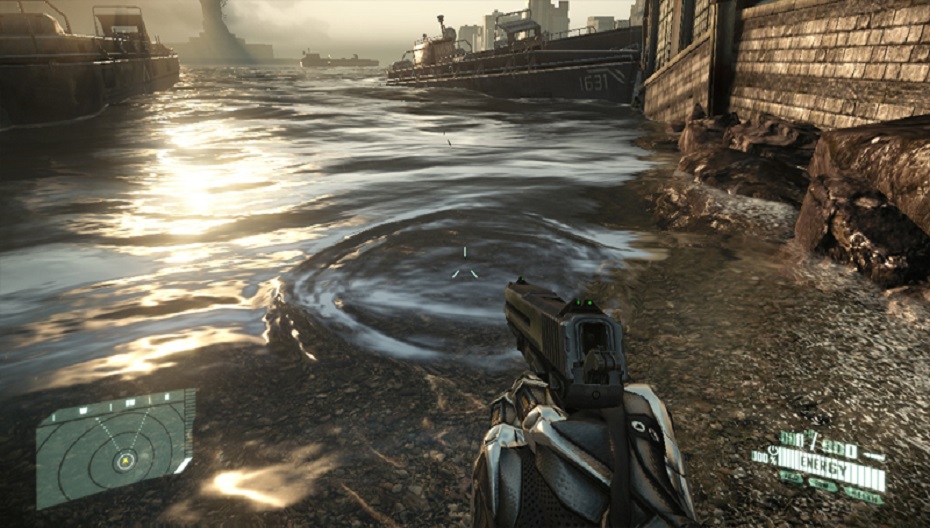
Anti-aliasing technology, which CryTek called Post-MSAA, they also recognized as an innovation in the gaming industry. MSAA gives slightly worse graphics quality, but also provides huge savings in processing power. Their own technique works by gathering information about anti-aliasing items and projecting them onto the player's screen.
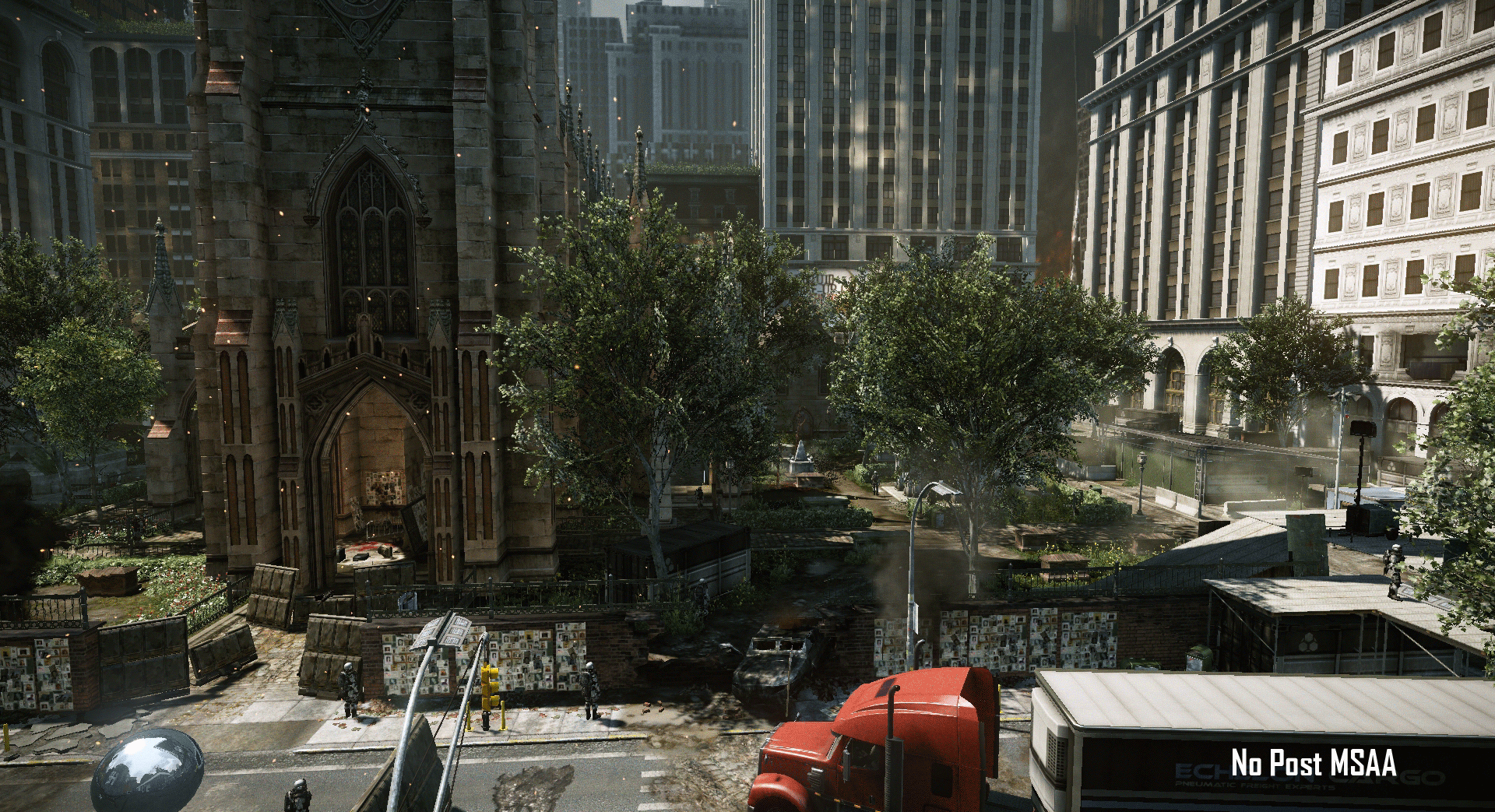
Shaders in CryEngine 3 are written once in a high-level programming language, and then automatically compiled for each platform. Shader output is optimized through artist settings and for the 3D environment in which the shader will be used. Thanks to this, it becomes possible to create such effects as: “invisibility effect”, wet, dirty and frozen surfaces, which can be “layered” one on top of the other and combined with other shaders that simulate effects such as metal, glass and others. CryEngine 3 supports per-pixel real-time lighting, reflections, refractions, volumetric heat effects and animated textures to simulate windows, bullet holes, sun glare surfaces and many other effects. CryEngine 3 shaders use a unified shader architecture,

"Übershader" is a single shader program with many features: one to four lights, light types, specular cubemaps, fog, detailed textures, normal maps, specular textures, and more. Millions of Übershader combinations can be generated. Übershader uses dynamic branching, splitting into multiple passes, reducing combinations, and accepting options with less functionality and lower performance requirements. Uses asynchronous shader compilation and a distributed job system to compile the shader cache.
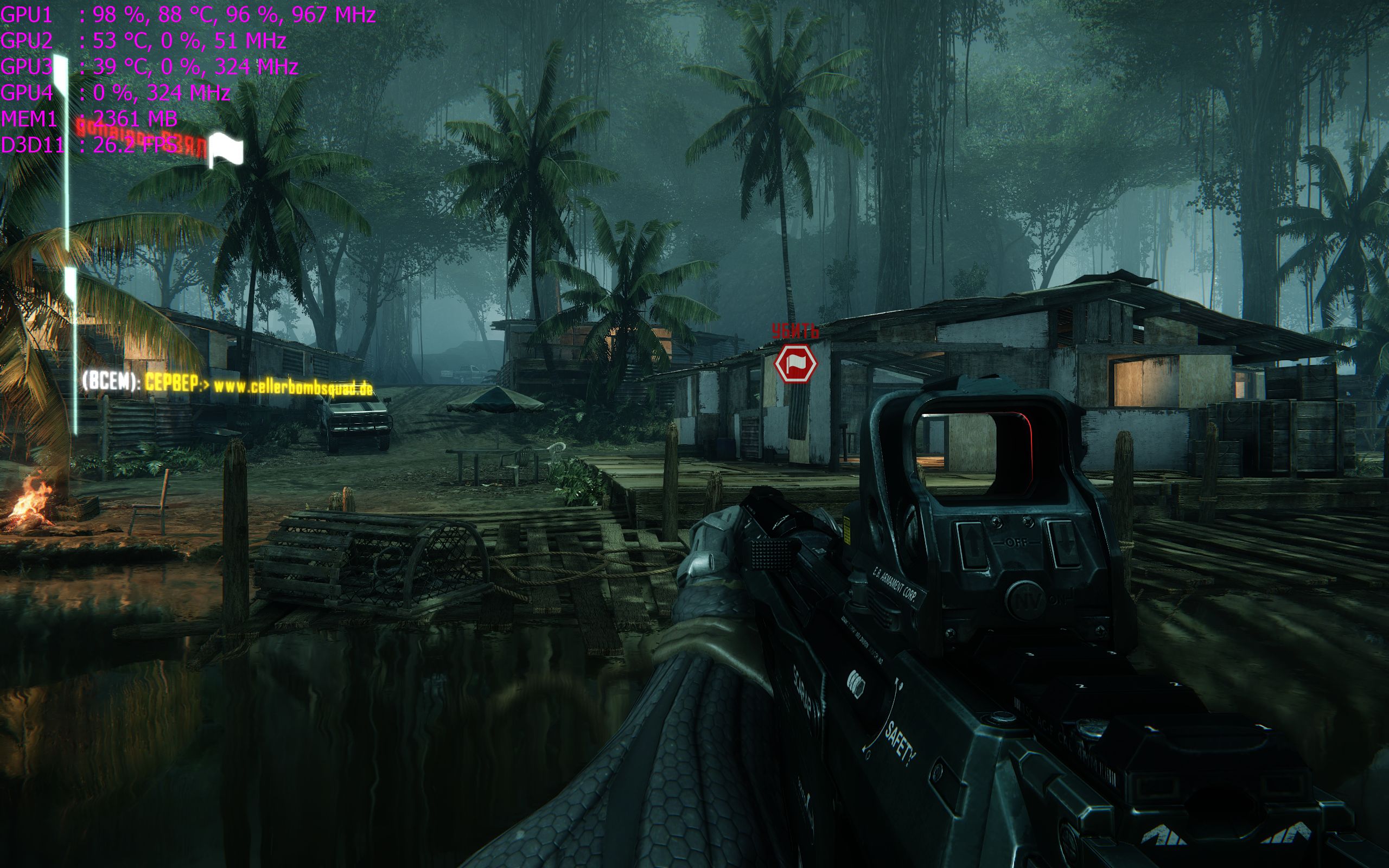
CryEngine 3 supports the Ati Eyefinity technology found in Radeon 5xxx series GPUs. This ability was demonstrated by Carl Jones on September 11, 2009, right after the public demonstration of the Ati Eyefinity technology. Jones showed a demo video of CryEngine 3 running on a Radeon 5xxx graphics card and on six displays. In this case, the total resolution of the output "image" was 5760 x 2160 pixels, although theoretically the maximum supported resolution is 7680 x 3200 pixels.


On PC, the difference between high settings and extreme settings is the amount and speed of the effects. But it doesn't add new ones. High settings correspond to the same level of graphics that consoles give out. The optimization of the engine has also been noticed by the developers of MMO games. Not so long ago, CryTek themselves announced their WarFace game, which is distributed according to the Free-to-play model and is built on a simplified version of the engine.
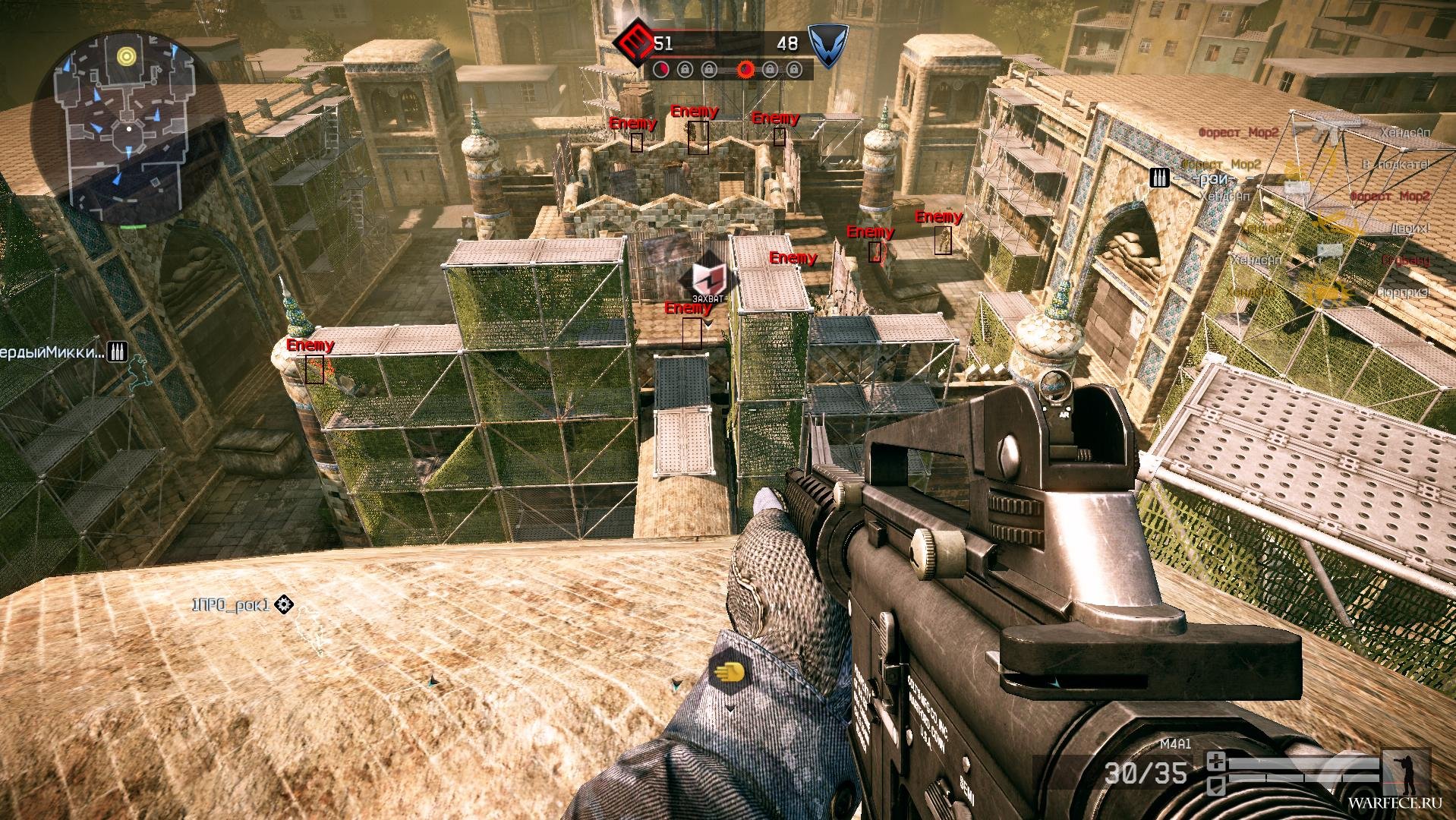
| SYSTEM REQUIREMENTS FOR CRYENGINE 3 |
| Minimum system requirements | Effective system requirements | Optimal system requirements |
|
Processor: AMD Athlon X2 6400+ or Core 2 Duo E8400
RAM: 2048 MB RAM
Video: 1024 MB
Video card : Radeon HD 5750 or GeForce GTS 450 Operating systems: Windows XP/Vista/7/8 |
Processor: AMD FX 4300 or Core i3 4330
RAM: 3076 MB RAM
Video: 2048 MB
Video card : Radeon HD 7950 or GeForce GTX 670 Operating systems: Windows XP/Vista/7/8 |
Processor: AMD FX 8350 or Core i7 2600
RAM: 4096 MB RAM
Video: 3076 MB
Video card : Radeon R9 290 or GeForce GTX 780 Operating systems: Windows XP/Vista/7/8 |
| CONCLUSIONS |
Summing up all of the above, we can say that CryTek created not just a game engine, CryTek created a technology that has become a benchmark and set the bar for quality for all other developers. CryEngine and FarCry brought incredible success to the company in their time. Not resting on their laurels, CryTek sell all rights and focus on work. Instead of collecting and squeezing everything out of the series, CryTek are creating a new engine and a new legendary series of games. CryEngine 2 has absorbed all the advantages of its predecessor and actively uses the technologies of its time. CryEngine 3 has also become quite successful. Despite the fact that its main feature is the optimization of all old components, thanks to this it is possible to design all effects even on weak computers.



